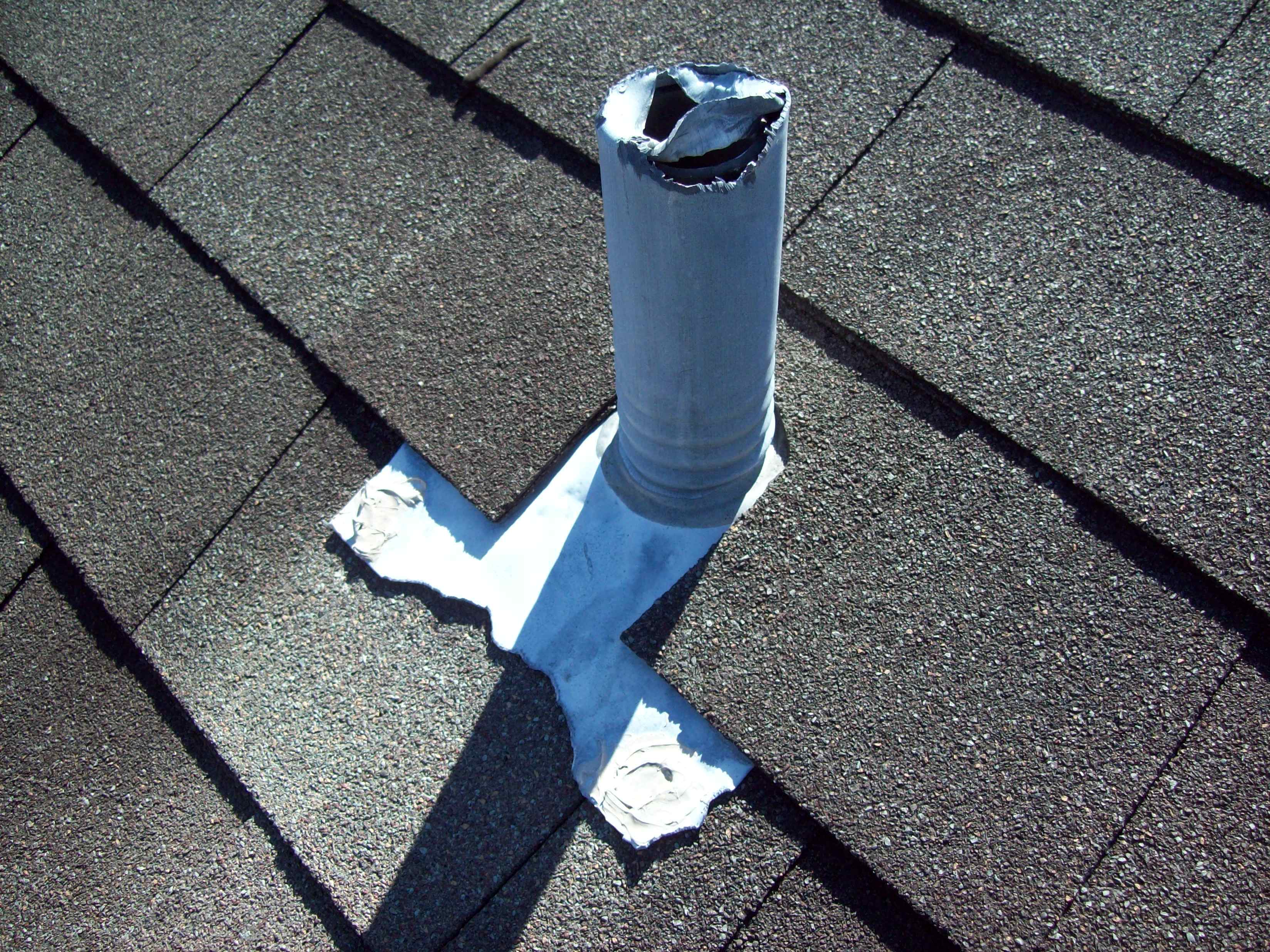When you think about plumbing, you probably don’t picture your roof.
The images that come to mind include pipes, a toilet, sink, shower, and bathtub. Right?
But did you know that a very important part of your home’s plumbing system is on the roof? Go outside and look up. Notice the grey pipes sticking up? Those pipes are called roof vents and they play a vital role in making sure the plumbing is working well.
What Are Plumbing Roof Vents?
 Plumbing vents are special pipes that extend from the appliances in your home to an outdoor area, typically, the roof. While you are outside check the placement of the pipes. You will probably notice that they are located near the kitchen, bathroom, and laundry area. Every appliance in your home must have a trap and most fixtures are connected to a vent as well.
Plumbing vents are special pipes that extend from the appliances in your home to an outdoor area, typically, the roof. While you are outside check the placement of the pipes. You will probably notice that they are located near the kitchen, bathroom, and laundry area. Every appliance in your home must have a trap and most fixtures are connected to a vent as well.
What Do Rooftop Plumbing Vents Do?
The vent ensures healthy and comfortable living conditions in your house by carrying sewer gases outside your home. The roof vent is designed to remove sewer gas and regulate air pressure in your home’s pipes.
Without the plumbing vents, water and waste would not move properly through your house. The vents are vital to maintaining neutral air pressure in the drains. When neutral air pressure exists, then gravity is able to successfully pull water and waste through the pipes and prevent toxic gases from entering your home.
How Do Plumbing Vents Work?
Wastewater enters the plumbing system through fixtures such as the toilet, sinks, and showers. When the wastewater exits the fixture, it flows through a trap. The trap is typically U, S, or J shaped and always contains water. The bend and water in the trap are designed to create a seal that prevents sewer gases from passing back up through the drainpipes and coming into the house.
The plumbing vents also bring oxygen into the plumbing system. The oxygen helps with aerobic sewage digestion, or the breaking down of waste. As mentioned above, the vent also helps to maintain the water seal created in the traps.
When wastewater moves through a pipe, it acts like a piston. The downstream air can compress and create positive pressure in the pipe. The upstream air creates a vacuum that pulls the waste back. The positive pressure in the pipe must be released, or it will push back against the waste. There must also be airflow behind the waste. If these conditions do not exist, then negative pressure will occur and result in suction that allows the sewer gases to be released into the home.
Slow Drains? Your Plumbing Roof Vent May Be Clogged!
Roof vents can become clogged and it is a common cause for slow draining pipes. It is important to check vents for debris to ensure that the plumbing system is able to do it’s job correctly.
Think your roof vents may be causing plumbing problems at your house? Give 1st Home & Commercial Services a call today at (512) 957-2992 and we can have one of our trained professionals come out and take a look. Don’t jeopardize your family’s health with a clogged roof vent.


